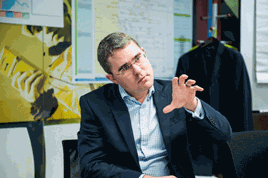Much of the focus on Crossrail thus far has been firmly on the progress made below ground, as the route’s central portions built deep below London have marched on towards completion.
It’s not difficult to see why much of the public interest has been channelled underground, despite the tunnels accounting for less than a quarter of the total route mileage.
Thirteen miles of new twin-tunnels connecting principal stations including Liverpool Street, Canary Wharf and Bond Street is an engineering feat to be marvelled at, and the sort of flagship project seldom seen in 21st century Britain.
Eight tunnel boring machines, named by public vote after respected female figures including Jessica Ennis-Hill and Queens Elizabeth II and Victoria, have dug their way to stardom at depths of up to 42 metres since they broke the first soil in May 2012. Physical work on the project had started three years earlier, and included preparatory work for the rebuilding of Tottenham Court Road station and piling work at Canary Wharf.
The completion of the tunnelling phase last summer (RAIL 777) revealed some impressive statistics, including the laying of 200,000 concrete tunnel segments, 3.4 million tonnes of excavated spoil, and 70 million work hours.
The passing of this milestone achievement was even marked by Prime Minister David Cameron’s visit on June 4 2015 to Farringdon, where the final breakthrough had been made a few days earlier.
In the intervening seven months, work has continued apace to lay track and to make ready stations along the covered route for their final fitting out of signalling, communications equipment, overhead wiring and tunnel ventilation. Services will begin running in these sections in 2018, and across the full east-west route in December 2019.
Crossrail Ltd, a fully owned subsidiary of Transport for London, is responsible for the delivery of these 26 subterranean miles - its remit lies between the tunnel portals near Paddington, Stratford and Victoria Dock, plus two shorter tunnels between Woolwich and Plumstead, and Connaught in London’s Docklands.
But the rest (and majority) of the route falls under the auspices of Network Rail, which must deliver more than 60 route miles along large stretches of the Great Western Main Line (GWML) between Paddington and Reading, and the Great Eastern Main Line between Stratford and Shenfield. Almost two miles of brand new railway is also being constructed between the portal at Plumstead and a new terminus at Abbey Wood.
NR has been allocated £2.3 billion of Crossrail’s total £14.9bn budget to deliver its part of the project - laying new track, upgrading 43 miles of existing lines, and improving 29 stations either side of the tunnels. Leading NR’s contribution to one of Europe’s largest construction projects is Programme Director Matthew Steele. He spoke with RAIL at his office near Paddington station just before Christmas, as the final preparations were being made for major track possessions over the festive period.
Steele previously worked with Metronet Rail, Angel Trains and Bombardier. Prior to joining NR in September 2013, he had worked for London Underground for six years as head of power, communications and cooling upgrades. NR then deployed him as programme director for its £1.8bn FTN/GSM-R programme to deliver an integrated train-to-train telecommunications system across the entire network.















Login to comment
Comments
No comments have been made yet.